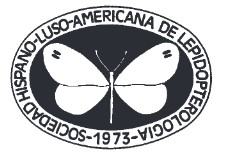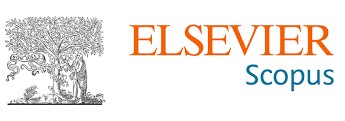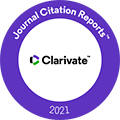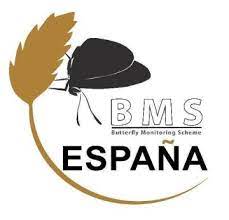Variación en el tamaño y la forma del ala posterior de Plutella xylostella (Linnaeus, 1758) (Lepidoptera: Plutellidae)
DOI:
https://doi.org/10.57065/shilap.338Palabras clave:
Lepidoptera, Plutellidae, geometric morphometrics, insect pest, taxonomy, VenezuelaResumen
Plutella xylostella (Linnaeus, 1758) ha sido señalada como la especie de Lepidoptera con la más amplia distribución. Sin embargo, es una especie altamente polimórfica, existiendo evidencia de que lo que se conoce como P. xylostella es en realidad un complejo de especies, en este sentido, es posible que no todos los registros correspondan a esta especie. El objetivo de este trabajo fue evaluar la variabilidad en el tamaño y la forma del ala posterior de especímenes de P. xylostella colectados en Venezuela, y explorar una posible diferenciación entre grupos de individuos. Para este propósito, se utilizaron 126 especímenes pertenecientes a las colecciones entomológicas del Museo del Instituto de Zoología Agrícola Francisco Fernández Yépez (MIZA, Universidad Central de Venezuela) y el Instituto Nacional de Investigaciones Agrícolas (INIA). Los patrones de variación en el tamaño y la forma del ala fueron estudiados mediante morfometría geométrica de hitos discretos. El análisis reveló diferencias significativas en la forma del ala entre tres grupos separados por diferencias observadas en la bifurcación de la vena M. Estas diferencias pueden ser atribuidas a variación intra o interespecífica, no se cuenta con la suficiente evidencia para discernir. En Venezuela, existen tres morfotipos de P. xylostella separados con base en diferencias en el tamaño y la forma de las alas posteriores. Es importante esclarecer la identidad de estos morfotipos, combinando estos resultados con información adicional como datos moleculares y taxonomía de inmaduros.
Descargas
Estadísticas globales ℹ️
|
375
Visualizaciones
|
323
Descargas
|
|
698
Total
|
|
Citas
ADAMS, D., COLLYER, M. L. & KALIONTZOPOULOU, A., 2018.– Geomorph: Software for geometric morphometric analyses.– R package version 3.0.6.
ANDERSON, M. J., 2001.– A new method for non-parametric multivariate analysis of variance.– Austral Ecology, 26(1): 32-46. DOI: https://doi.org/10.1111/j.1442-9993.2001.01070.pp.x
BAI, Y., BIN MA, L., XU, S. & WANG, G., 2015.– A geometric morphometric study of the wing shapes of Pieris rapae (Lepidoptera: Pieridae) from the Qinling Mountains and adjacent regions: An environmental and distance-based consideration.– Florida Entomologist, 98(1): 163-169. DOI: https://doi.org/10.1653/024.098.0128
BARANIAK, E., 2007.– Taxonomic revision of the genus Plutella Schrank, 1802 (Lepidoptera: Plutellidae) from the Palaearctic region with notes on its phylogeny.– Polskie Pismo Entomologiczne, 76 (Supplement): 1-122.
BECHYNÉ, J. & BECHYNÉ, B., 1970.– Consideraciones sobre la Ley de Maulik (Coleoptera: Phytophaga).– Actas IV Congreso Latinoamericano de Zoología pp. 669-682.
BOOKSTEIN, F. 1991.– Morphometric tools for landmark data: Geometry and Biology: 435 pp. Cambridge University Press, Cambridge. DOI: https://doi.org/10.1017/CBO9780511573064
CAÑAS-HOYOS, N., MÁRQUEZ, E. J. & SALDAMANDO-BENJUMEA, C. I., 2014.– Differentiation of Spodoptera frugiperda (Lepidoptera: Noctuidae) corn and rice strains from Central Colombia: a wing morphometric approach.– Annals of the Entomological Society of America, 107(3): 575-581. DOI: https://doi.org/10.1603/AN12154
CHACKO, J. & NARAYANASAMY, P., 2002.– Morphological characteristics of five diamondback moth (Plutella xylostella L.) populations.– In A. A. KIRK & D. BORDAT (eds.). Improving biocontrol of Plutella xylostella: pp. 147-152. Proceedings of the International Symposium. Montpellier, France, 21-24 October 2002. CIRAD, USDA-ARS. CIRAD, Montpellier.
COLLYER, M. L., SEKORA, D. J. & ADAMS, D. C., 2015.– A method for analysis of phenotypic change for phenotypes described by high dimensional data.– Heredity, 115(4): 357-365. DOI: https://doi.org/10.1038/hdy.2014.75
FERREIRA, W., 2014.– Padrões de variação morfológica nas asas de Sphingidae (Lepidoptera: Bombycoidea): efeitos alométricos, filogenéticos e dimorfismo sexual: 67 pp. [Master Dissertation] University of Brasilia, Brasilia.
FRANCOY, T. M., WITTMANN, D., DRAUSCHKE, M., MÜLLER, S., STEINHAGE, V., BEZERRA-LAURE, M., DE JONG, D. & GONÇALVES, L. S., 2008.– Identification of Africanized honey bees through wing morphometrics: two fast and efficient procedures.– Apidologie, 39(5): 488-494. DOI: https://doi.org/10.1051/apido:2008028
FRANCOY, T. M., WITTMANN, D., STEINHAGE, V., DRAUSCHKE, M., MÜLLER, S., CUNHA, D. R., NASCIMIENTO, A. M., FIGUEIREDO, V. L. C., SIMÕES, Z. L .P., DE JONG, D., ARIAS, M. C. & GONÇALVES, L. S., 2009.– Morphometric and genetic changes in a population of Apis mellifera after 34 years of Africanization.– Genetics and Molecular Research, 8(2): 709-717. DOI: https://doi.org/10.4238/vol8-2kerr019
FRANCOY, T. M., GRASSI, M. L., IMPERATRIZ-FONSECA, V. L., MAY-ITZÁ, W. & QUEZADA-EUÁN, J. J., 2011.– Geometric morphometrics of the wing as a tool for assigning genetic lineages and geographic origin to Melipona beecheii (Hymenoptera: Meliponini).– Apidologie, 42(4): 499-507. DOI: https://doi.org/10.1007/s13592-011-0013-0
JANSSEN, K., REINEKE, A. SHEIRS, J. A., ZEBITZ, C. P. W. & HECKEL, D. G., 2008.– A host shift of diamondback moth from crucifers to peas: life history traits and genetic mechanisms.– In A. M. SHELTON, H. L. COLLINS & Y. ZHANG (eds.). The management of Diamondback Moth and other crucifer pest: Proceedings of the 5th International Workshop, Beijing 2006: pp. 55-62. Agricultural Science and Technology Press, Beijing.
JERATTHITIKUL, E., YAGO, M. & HIKIDA, T., 2014.– Sexual dimorphism and intraspecific variation in wing size and shape of Tongeia fischeri (Lepidoptera: Lycaenidae).– Entomological Science, 17(3): 342-352. DOI: https://doi.org/10.1111/ens.12068
JURIC, I., SALZBURGER, W. & BALMER, O., 2017.– Spread and global population structure of the diamondback moth Plutella xylostella (Lepidoptera: Plutellidae) and its larval parasitoids Diadegma semiclausum and Diadegma fenestrale (Hymenoptera: Ichneumonidae) based on mtDNA.– Bulletin of Entomological Research, 107(2): 155-164. DOI: https://doi.org/10.1017/S0007485316000766
JUSTUS, K. A. & MITCHELL, B. K., 1999.– Reproductive morphology, copulation, and inter-populational variation in the diamondback moth, Plutella xylostella (L.) (Lepidoptera: Plutellidae).– International Journal of Insect Morphology and Embryology, 28(3): 233-246. DOI: https://doi.org/10.1016/S0020-7322(99)00027-6
KARIYAWASAN, T., 2018.– Taxonomy, distribution and pest status of Plutella species (Lepidoptera: Plutellidae) in Australia and New Zealand: 123 pp. [Master Dissertation] Queensland University of Technology, Queensland.
KHAGHANINIA, S., MOHAMMADI, S. A., SARAFRAZI, A. M., IRANINE, K. & ZAHIRI, R., 2011.– Geometric morphometrics study on geographic dimorphism of codling moth Cydia pomonella (Lepidoptera, Tortricidae) from north west of Iran.– Vestnik Zologii, 45(5): 20-28. DOI: https://doi.org/10.2478/v10058-011-0028-z
KHIABAN, N. G. M. Z., IRANI, K. H., HEJAZI, M. S., MOHAMMADI, S. A. & SOKHANDAN, N., 2010.– A geometric morphometric study of the host populations of the Pod Borer, Helicoverpa armigera (Hübner) (Lepidoptera: Noctuidae) in some parts of Iran.– Munis Entomology & Zoology, 5(1): 140-147.
LANDRY, J.F. & HEBERT, P., 2013.– Plutella australiana (Lepidoptera: Plutellidae), an overlooked diamondback moth revealed by DNA barcodes.– ZooKeys, 327: 43-63. DOI: https://doi.org/10.3897/zookeys.327.5831
MÁRQUEZ, E., JARAMILLO, O. N., GÓMEZ-PALACIO, A. & DUJARDIN, J. P., 2011.– Morphometric and molecular differentiation of a Rhodnius robustus-like form from R. robusts Larousse 1927 and R. prolixus Stal 1859 (Hemiptera: Reduviidae).– Acta Tropica, 120(1): 103-109. DOI: https://doi.org/10.1016/j.actatropica.2011.06.009
MARSTELLER, S., ADAMS, D. C., COLLYER, M. L. & CONDON, M., 2009.– Six cryptic species on a single species of host plant: morphometric evidence for possible reproductive character displacement.– Ecological Entomology, 34(1): 63-73. DOI: https://doi.org/10.1111/j.1365-2311.2008.01047.x
MOZZAFFARIAN, F., SARAFRAZI, A., NOURI, G, & ARIANA, A., 2007.– Morphological variation among Iranian populations of the Carob Moth, Ectomyelois ceratoniae (Zeller 1839) (Lepidoptera: Pyralidae).– Zoology in the Middle East, 41(1): 81-91. DOI: https://doi.org/10.1080/09397140.2007.10638230
PERRARD, A., BAYLAC, M., CARPENTER, J. M. & VILLEMANT, C., 2014.– Evolution of wing shape in hornets: why is the wing venation efficient to species identification?.-Journal of Evolutionary Biology, 27(12): 2665-2675. DOI: https://doi.org/10.1111/jeb.12523
PICHON, A., ARVANITAKIS, L., ROUX, O., KIRK, A., ALAUZET, C., BORDAT, D. & LEGAL, L., 2006.– Genetic differentiation among various populations of the diamondback moth Plutella xylostella (Lepidoptera: Yponomeutidae).– Bulletin of Entomological Research, 96(2): 137-144. DOI: https://doi.org/10.1079/BER2005409
PZRZYBYTOWICZ, L., PNIAK, M. & TOFILSKI, A., 2015.– Semiautomatic identification of European Corn Borer (Lepidoptera: Crambidae).– Journal of Economic Entomology, 190(1): 1-5. DOI: https://doi.org/10.1093/jee/tov300
R CORE TEAM, 2018.– R: A language and environment for statistical computing.– R Foundation for Statistical Computing, Vienna, Austria.– Available from https://www.R-project.org/.
ROBINSON, G. S. & SATTLER, K., 2001.– Plutella in the Hawaiian Islands: relatives and host-races of the diamondback moth (Lepidoptera: Plutellidae).– Bishop Museum Occasional Papers, 67: 1-27.
ROGGERO, A. & PASSERIN, P., 2005.– Geometric morphometric analysis of wings variation of two populations of Scythris obscurella species-group: geographic or interspecific differences? (Lepidoptera: Scythrididae).– SHILAP Revista de lepidopterología, 33(130): 101-112.
ROHLF, F. J. 2010.– Tpsdig Version 2.16.– Department of Ecology and Evolution, State University of New York at Stony Brook, New York.
ROUX, O., GEVREY, M., ARVANITAKIS, L., GERS, C., BORDAT, D. & LEGAL, L., 2007.– ISSR-PCR: Tool for discrimination and genetic structure analysis of Plutella xylostella populations native from different geographical areas.– Molecular Phylogenetics and Evolution, 43(1): 240-250. DOI: https://doi.org/10.1016/j.ympev.2006.09.017
SALINAS, P. J. 1986.– Studies on diamondback moth in Venezuela with reference to other Latinamerican countries.– In: Diamondback Moth Management. Proceedings of the First International Workshop: pp. 17-24. Tainan, Taiwan, 11-15 March, 1985. Shanhua, Taiwan: Asian Vegetable Research and Development Center.
SUBRAMANIAN, S. & LÖEHR, B., 2006.– Is the diamonback moth a polyphagous pest? Some thoughts about its host range expansion to pea.– In Management of Diamondback Moth and other crucifer insect pests: Proceedings of the Fifth International Workshop: pp. 63-71. Beijing, China.
SWIFT, M. L., 1997.– GraphPad prism, data analysis, and scientific graphing.– Journal of Chemical Information and Computer Sciences, 37(2): 411-412. DOI: https://doi.org/10.1021/ci960402j
TALEKAR, N. S. & SHELTON, A. M., 1993.– Biology, ecology and management of the Diamondback Moth.– Annual Reviews of Entomology, 38(1): 275–301. DOI: https://doi.org/10.1146/annurev.en.38.010193.001423
VILLEMANT, C., SIMBOLOTTI, G. & KENIS, M., 2007.– Discrimination of Eubazus (Hymenoptera, Braconidae) sibling species using geometric morphometrics analysis of wing venation.– Systematic Entomology, 32(4): 625-634. DOI: https://doi.org/10.1111/j.1365-3113.2007.00389.x
Publicado
Cómo citar
Número
Sección
Licencia
Derechos de autor 2020 A. Moreno, A. Viloria

Esta obra está bajo una licencia internacional Creative Commons Atribución 4.0.
El autor retiene sus derechos de marca y patente sobre cualquier proceso o procedimiento dentro del artículo.
El autor retiene el derecho de compartir, distribuir, ejecutar y comunicar públicamente el artículo publicado en SHILAP Revista de lepidopterología, con reconocimiento inicial de su publicación en SHILAP Revista de lepidopterología.
El autor retiene el derecho para hacer una posterior publicación de su trabajo, de utilizar el artículo a publicarlo en un libro, siempre que indique su publicación inicial en SHILAP Revista de lepidopterología.
Cada envío a SHILAP Revista de lepidopterología debe ir acompañado de una aceptación de los derechos de autor y del reconocimiento de autoría. Al aceptarlos, los autores conservan los derechos de autor de su trabajo y aceptan que el artículo, si es aceptado para su publicación por SHILAP Revista de lepidopterología, tendrá una licencia de uso y distribución “Reconocimiento 4.0 Internacional de Creative Commons” (CC BY 4.0), que permite a terceros compartir y adaptar el contenido para cualquier propósito dando el crédito apropiado al trabajo original.
Puede consultar desde aquí la versión informativa y el texto legal de la licencia. La indicación de la licencia CC BY 4.0 debe indicarse expresamente de esta manera cuando sea necesario.
A partir de 2022, el contenido de la versión impresa y digital se encuentra bajo una licencia de uso y distribución “Reconocimiento 4.0 Internacional de Creative Commons” (CC BY 4.0), que permite a terceros compartir y adaptar el contenido para cualquier propósito dando el crédito apropiado al trabajo original.
El contenido anterior de la revista se publicó bajo una licencia tradicional de derechos de autor; sin embargo, el archivo está disponible para acceso gratuito.
Al usar el contenido de SHILAP Revista de lepidopterología publicado antes del año 2022, incluidas figuras, tablas o cualquier otro material en formato impreso o electrónico pertenecen a los autores de los artículos, los autores deben obtener el permiso del titular de los derechos de autor. Las responsabilidades legales, financieras y penales a este respecto pertenecen al autor(es).
En aplicación del Principio de Prioridad del Código Internacional de Nomenclatura Zoologica, no se autoriza el depósito en repositorios, páginas web personales o similares de cualquier otra versión distinta a la publicada por el editor.




























